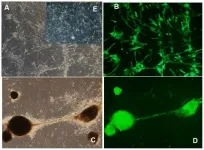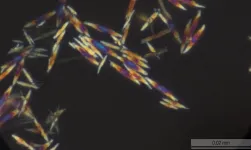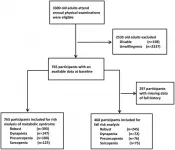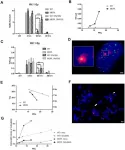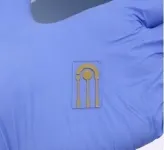(Press-News.org) Aging-US published "Aging and rejuvenation - a modular epigenome model" which reported that the view of aging has evolved in parallel with the advances in biomedical sciences.
Long considered as an irreversible process where interventions were only aimed at slowing down its progression, breakthrough discoveries like animal cloning and cell reprogramming have deeply changed our understanding of postnatal development, giving rise to the emerging view that the epigenome is the driver of aging. The idea was significantly strengthened by the converging discovery that DNA methylation at specific CpG sites could be used as a highly accurate biomarker of age defined by an algorithm known as the Horvath clock (also published in Aging-US here).
It was at this point where epigenetic rejuvenation came into play as a strategy to reveal to what extent biological age can be set back by making the clock tick backwards.
Initial evidence suggests that when the clock is forced to tick backwards in vivo, it is only able to drag the phenotype to a partially rejuvenated condition.
This http://www.Aging-US.com study reports that epigenetic rejuvenation seems to hold the key to arresting or even reversing organismal aging.
Dr. Rodolfo G. Goya from The Institute for Biochemical Research at The National University of La Plata said "A more relevant concept than chronological age is biological age, which refers to the functional and structural status of an organism at a given age."
The situation changed with the relatively recent discovery that the level of age-related methylation of a set of cytosine-guanine dinucleotides located at specific positions on DNA throughout the genome, constitutes a highly reliable biomarker of aging defined by a mathematical algorithm, the multi-tissue age predictor also known as the epigenetic clock, devised by Stephen Horvath in 2013.
Other epigenetic clocks have been devised but since most are based on DNA methylation profiles, what will be discussed here for Horvath's clock will apply to all of them.
The features of the epigenetic clock have been extensively discussed in the literature and will not be reviewed here.
We will discuss different views of aging considered as an epigenetic mechanism, the role that the epigenetic clock may play in the process and rejuvenation as an interventive approach able to set back epigenetic age.
The Goya Research Team concluded in their Aging-US Research Output that most theories aimed not only at elucidating the mechanism of aging but also at providing effective interventions to slow aging down.
In fact, the field of endocrinology was born from experiments -- aimed at testing a theory of aging -- reported at the end of the XIX century, by Charles E. Brown-Séquard, who injected himself subcutaneously on 10 occasions over a 3-week period, with testicular extracts derived from dogs and guinea pigs in an attempt to counter the effects of aging.
The hypothesis proposing the epigenome as the driver of aging was significantly strengthened by the converging discovery that DNA methylation at specific CpG sites could be used as a highly accurate biomarker of age defined by the Horvath clock.
The strong correlation between the dynamics of DNA methylation profiles and the rate of biological aging leads to the idea that the epigenetic clock may in fact be the pacemaker of aging or at least a component of it.
What seems to be clear is that epigenetic rejuvenation by cyclic partial reprogramming or alternative non-reprogramming strategies holds the key to both, understanding the mechanism by which the epigenome drives the aging process and arresting or even reversing organismal aging.
INFORMATION:
Sign up for free Altmetric alerts about this article
DOI - https://doi.org/10.18632/aging.202712
Full Text - https://www.aging-us.com/article/202712/text
Correspondence to: Rodolfo G. Goya email: goya@isis.unlp.edu.ar
Keywords: aging, DNA methylation, epigenetic clock, rejuvenation, cell reprogramming
About Aging-US
Launched in 2009, Aging-US publishes papers of general interest and biological significance in all fields of aging research as well as topics beyond traditional gerontology, including, but not limited to, cellular and molecular biology, human age-related diseases, pathology in model organisms, cancer, signal transduction pathways (e.g., p53, sirtuins, and PI-3K/AKT/mTOR among others), and approaches to modulating these signaling pathways.
To learn more about Aging-US, please visit http://www.Aging-US.com or connect with @AgingJrnl
Aging-US is published by Impact Journals, LLC please visit http://www.ImpactJournals.com or connect with @ImpactJrnls
Media Contact
18009220957x105
MEDIA@IMPACTJOURNALS.COM
Having the right tool for the job makes the job a lot easier, less expensive and faster. Chemical engineering researchers have now developed a virtual laboratory that can be used to determine the artificial intelligence (AI) tools best suited for addressing various chemical synthesis challenges in flow chemistry systems.
"Autonomous systems have tremendous potential for accelerating chemical R&D and manufacturing, but they are not in widespread use yet," says Milad Abolhasani, corresponding author of a paper on the work and an assistant professor of chemical engineering at North Carolina State University. "These systems face two kinds of ...
Scientists from MIPT and ITMO University and their colleagues have studied the formation and growth of crystals from simple organic molecules into large associations. These experiments will help create capsules for targeted drug delivery to specific tissues in the human body. The scientific paper was published in the journal Crystal Growth & Design.
Melamine cyanurate consists of melamine, colourless crystals, and cyanuric acid, whose molecules associate in a similar way to DNA formation. The various studies associated with it could be useful ...
COLUMBUS, Ohio - As psychedelics gain ground as a potential therapy for mental health disorders, there remains a pressing concern that patients in clinical trials may have adverse effects to the drugs.
New research identifies personality traits that have been associated with positive and negative experiences on psychedelics in previous studies, information that could help predict how future clinical trial participants will respond to the drugs.
The findings suggest that people more open to new experiences and willing to surrender to the unknown may be best positioned to have a positive experience on psychedelics, and individuals who tend to be preoccupied or apprehensive could be more likely to have a ...
ITHACA, N.Y. - As the COVID-19 pandemic took hold in 2020, the list of things people could not do grew increasingly long.
But while going to the office, attending live events and gathering with large groups of friends became difficult or impossible, other activities grew in popularity - including online learning.
Drawing on records from DataCamp, an online platform tailored toward programming skills, a research team at Cornell University and Arizona State University used U.S. states' staggered adoption of nonessential business closures (NBC) to estimate their effects on the demand for online learning. The gradual closure of businesses across the U.S. gave the researchers a way to make a case for the cause and effect of NBC on increased engagement with the DataCamp ...
Aging-US published "Impact of adiposity on muscle function and clinical events among elders with dynapenia, presarcopenia and sarcopenia: a community-based cross-sectional study" which reported that low muscle function determined unfavorable clinical outcome than low muscle mass; nevertheless, comparison of detrimental parameters among dynapenia, presarcopenia and sarcopenia was sparse.
The authors hypothesized that adiposity is implicated in low muscle function related adverse events.
Associations of different obesity parameters, metabolic syndrome and fall among the groups were analyzed.
Among 765 participants, ...
The COVID-19 and Cancer Consortium (CCC19) published new findings in the Annals of Oncology, showing heightened mortality and racial disparities for patients with cancer diagnosed with SARS-CoV-2 infection.
After reviewing detailed information from almost 5,000 patients with active or past cancer and laboratory-confirmed COVID-19 diagnosis, CCC19 study authors found associations among laboratory measures, clinical factors -- including older age, hematological malignancy and recent chemotherapy - and poor clinical outcomes. Of the patients in the study with COVID-19 ...
Aging-US published "Functional analysis of POLD1 p.ser605del variant: the aging phenotype of MDPL syndrome is associated with an impaired DNA repair capacity" which reported that Mandibular hypoplasia, Deafness and Progeroid features with concomitant Lipodystrophy define a rare systemic disorder, named MDPL Syndrome, due to almost always a de novo variant in POLD1 gene, encoding the DNA polymerase δ.
A decline of cell growth, cellular senescence and a blockage of proliferation in G0/G1 phase complete the aged cellular picture.
Moreover, the rate of telomere shortening was greater in pathological ...
Researchers at the DZNE (Germany), at Massachusetts General Hospital (USA) and at the genomic medicine company Sangamo Therapeutics, Inc. tested a novel gene regulation approach to treat brain diseases such as Alzheimer's in laboratory studies. It leverages zinc finger proteins, which specifically bind to the DNA that codes for the protein Tau without altering it, thereby reducing Tau production in the brain and preventing nerve damage. The preclinical results, published in the journal Science Advances, could lay the foundation for new therapies.
The Tau ...
The efficacy of biosensors used in clinical tests depends critically on the surface of the device on which the biorecognition molecules are immobilized. This surface can be adjusted and sometimes controlled using self-assembled molecular monolayers as matrices. The monolayers are films made up of organic molecules that under the right conditions assemble spontaneously on metal surfaces via chemical bonds between the sulfur atoms and the metal.
A study conducted at the University of São Paulo's São Carlos Physics Institute (IFSC-USP) in Brazil compared the performances of two types of self-assembled ...
Myelodysplastic syndrome (MDS) is a disease of the stem cells in the bone marrow, which disturbs the maturing and differentiation of blood cells. Annually, some 200 Finns are diagnosed with MDS, which can develop into acute leukaemia. Globally, the incidence of MDS is 4 cases per 100,000 person years.
To diagnose MDS, a bone marrow sample is needed to also investigate genetic changes in bone marrow cells. The syndrome is classified into groups to determine the nature of the disorder in more detail.
In the study conducted at the University of Helsinki, microscopic images of MDS patients' bone marrow samples were examined utilising an image analysis technique based ...
